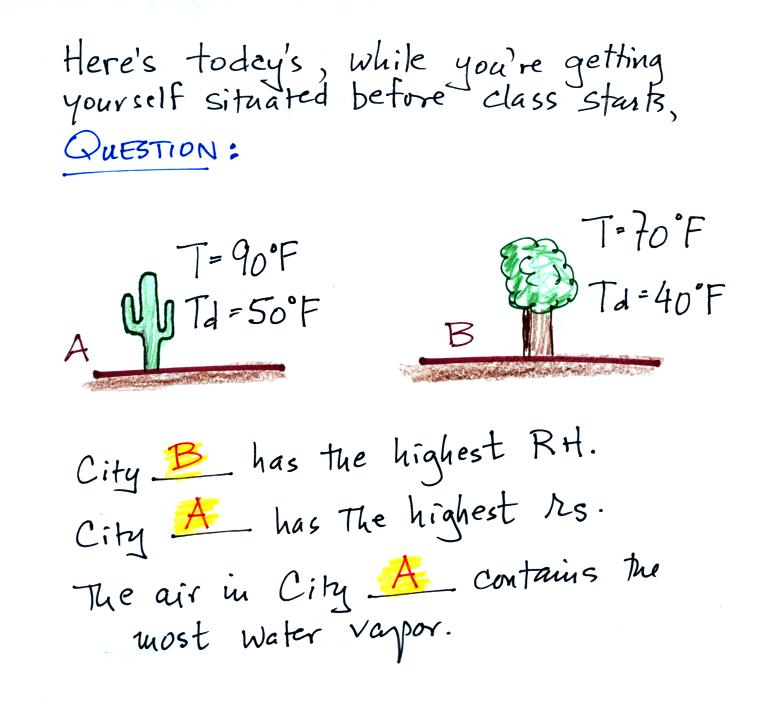
To answer the first question look at the difference between the
air temperature and the dew point temperature. The larger the
difference the lower the relative humidity (the RH=100% if there is
zero difference). There is a 40 F difference in A and a 30 F
difference in B. City B has the higher relative humidity.
The saturation mixing ratio value depends on air temperature.
City A has a higher air temperature and therefore a higher saturation
mixing ratio value.
The mixing ratio tells you how much water vapor is actually in the
air. Mixing ratio values aren't given here, but we do have the
dew point which is almost the same thing. The city with the
higher dew point temperature will have the highest actual amount of
water vapor. That is City A. Note that City B has a higher
relative humidity but actually contains less water vapor than City A.
